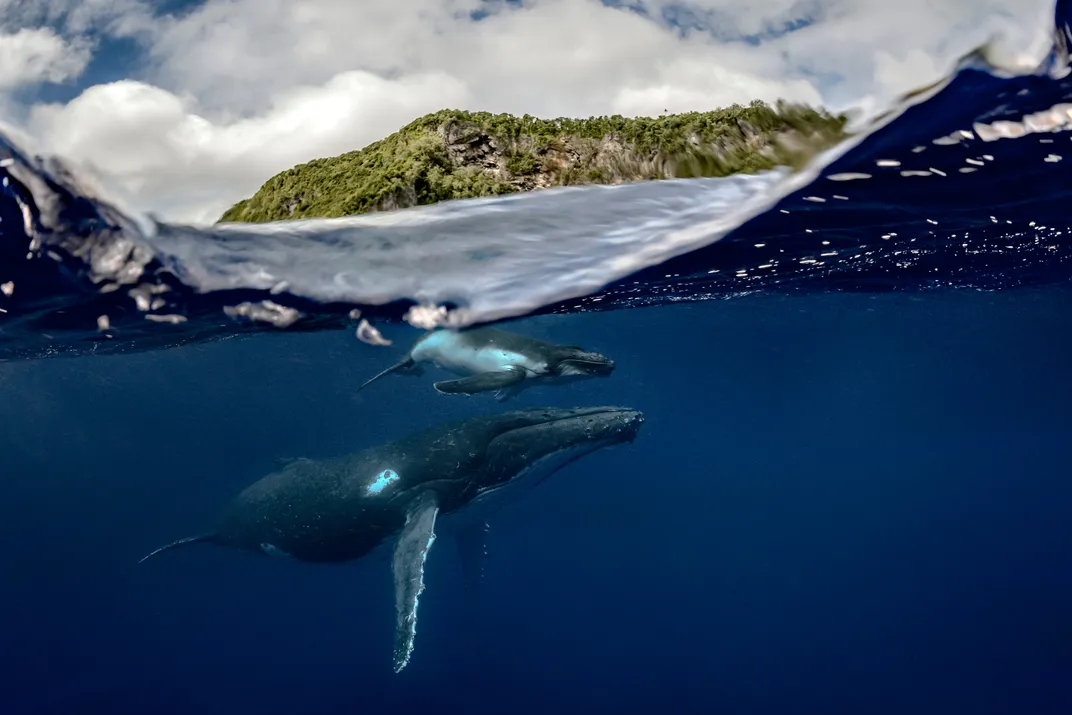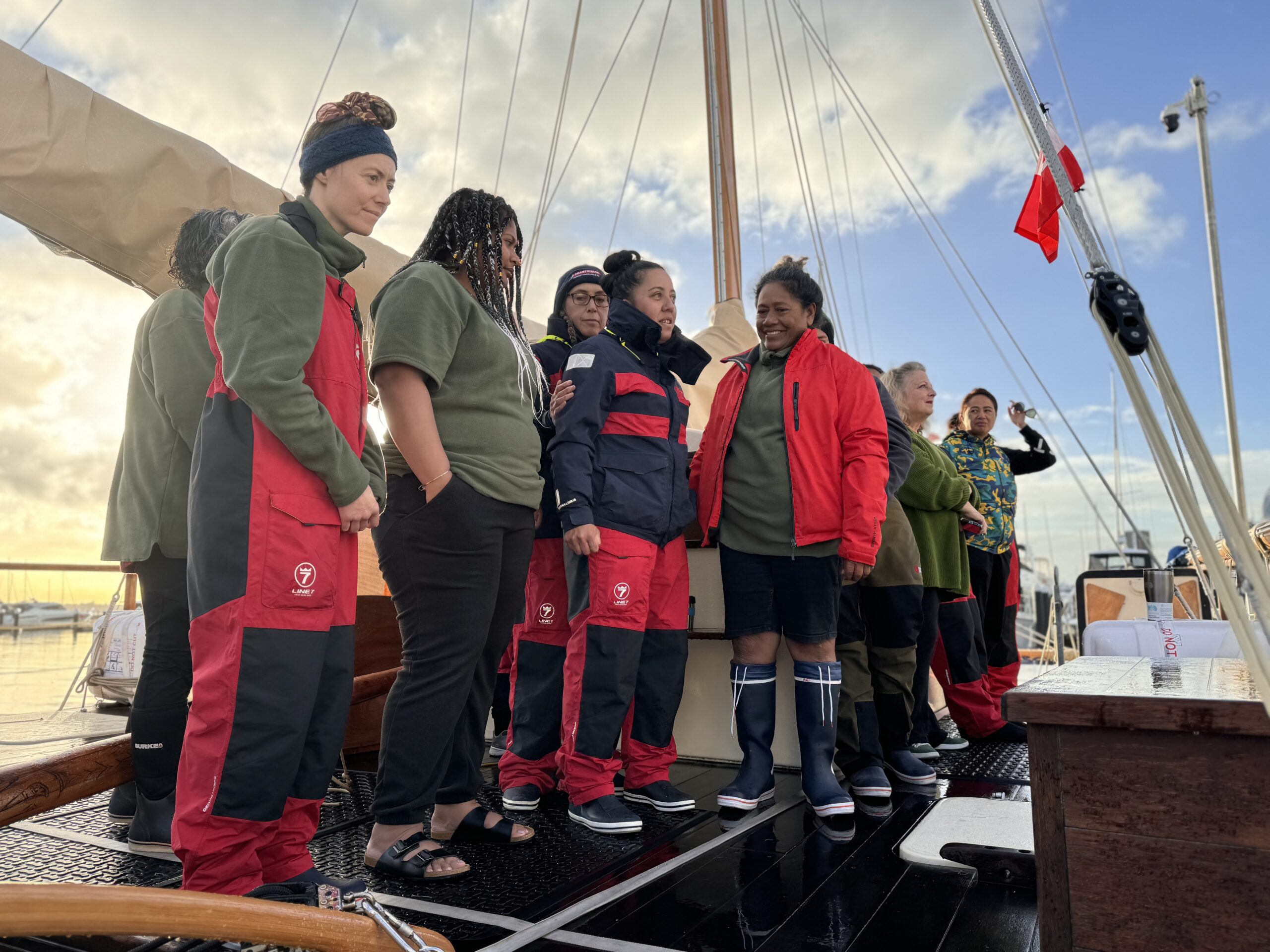The Hinemoana Halo Waka Moana Initiative recruited 12 crew members from the Cook Islands, New Zealand, Samoa and Tonga.
Tee Wells
“My people are called the whale riders,” says Māori conservationist Mere Takoko.
Whales not only hold cultural and spiritual significance for the Māori, the Indigenous Polynesian people of New Zealand, but they are also often seen as ancestors. “Whales symbolize strength, wisdom and resilience, and they are deeply respected as guardians of the ocean,” says Takoko.
Each year in June and July, humpback whales will pass New Zealand as they migrate north from Antarctica to the warmer waters of Tonga to mate, give birth and nurse their calves. They will stay there until October before they return south.
The humpback population that uses New Zealand’s waters once stood at 20,000, but whaling at the turn of the century saw it drop to a few hundred. Since New Zealand whalers harpooned their last whale in 1964, it has steadily risen to 10,000. As a keystone species, they play a large part in the ecosystem. The nutrients they release fertilize a food web.
Each year in June and July, humpback whales will pass New Zealand as they migrate north from Antarctica to the warmer waters of Tonga (shown here) to mate, give birth and nurse their calves. Steve Woods Photography/Getty Images
“My community would see them more regularly when I was younger,” says Takoko, a Gisborne resident who is now in her 40s. “It’s very difficult to see them now, as they don’t come as close to the coast. The migratory patterns have been changing.”
In 2023, Takoko was part of a team who helped bring together an all-female Pacific crew, which would sail 1,000 miles along the humpback highway from New Zealand to Tonga to help raise awareness of the plight of the whales. Along the way, the Hinemoana Halo Waka Moana Initiative crew would collect environmental DNA (eDNA) data, namely mucus, larvae, feces or skin cells, which researchers could then use to confirm what species are present or are missing from the water.
The Hinemoana Halo Waka Moana Initiative recruited 12 crew members from the Cook Islands, New Zealand, Samoa and Tonga. It included veteran sailors, such as Aunofo Havea, the first Tongan woman licensed as a sea captain, and Fealofani…
Click Here to Read the Full Original Article at Travel | smithsonianmag.com…
